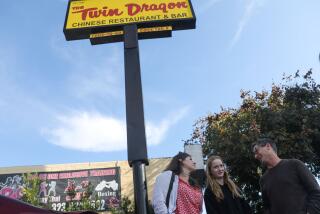America’s Bethlehem Has a Strong Sense of Religious, Ethnic Tradition
- Share via
BETHLEHEM, Pa. — When the first settlers christened Bethlehem on a Christmas Eve 35 years before the Declaration of Independence was written, they believed in communal living.
Today, the spirit of community still exists, although the city long ago abandoned its closed, Moravian-dominated society and accepted waves of immigrants to work in the steel and textile mills along the Lehigh River.
That spirit is encompassed in Bethlehem’s yearlong 250th anniversary celebration--from its ethnic pride picnic to its religious tolerance symposiums--that began last June and will end next July 4.
“We wanted everyone to participate,” said Sally Gillespie, the celebration’s chief organizer. “There were no commercial floats in the opening parade.”
Instead came the costumes of the Poles, the Germans, the Puerto Ricans, the Irish.
“There was a real sense of pride,” said Laurie Ghostley, who works as a community volunteer.
The $1.5-million cost of the celebration was raised mainly from 900 donations, and about 800 residents freely gave their time and energy to stuffing envelopes, blowing up balloons and organizing events.
“There’s a strong sense of volunteerism here,” said Gillespie.
On Dec. 24, 1741, the settlers, 17 Moravians who came to teach their religion to the local Indians, held a small Communion service in a half-finished log home. At that service, Col. Nicholas Ludwig von Zinzendorf gave the community the name of Bethlehem.
Originally, the Moravians lived in communal homes--one for single men, one for single women and one for families. As time passed, residents were allowed to own separate homes and their own businesses, but the church continued to own the land.
Not until 1845 did the city vote to allow outsiders into the community, mainly to take advantage of the opening of the Lehigh Canal.
The Lehigh Valley Railroad moved its headquarters to Bethlehem in 1857, attracting waves of Irish, German and Austrian immigrants. They settled on the south side of the river, calling their borough South Bethlehem.
Steel and textile mills began to line that side of the river. By the early 1900s, Slovaks, Russians, Hungarians and others arrived.
By World War I, steel was No. 1; Bethlehem Steel Corp. formed in 1904, and North and South Bethlehem united into one city.
In 1937, the Chamber of Commerce first tried to capitalize on the city’s name. Christmas lights were strung in hopes of bringing in tourists, but the blackouts of World War II ended the venture.
It took decades to build the city’s Christmas celebration into what it is today.
Now, every December, Bethlehem becomes “Christmas City U.S.A.” with religious events and sightseeing tours aimed at celebrating an old-fashioned holiday.
There are simple white lights in the windows of the downtown buildings, many of them original Moravian dwellings dating to the mid-18th Century.
While the white lights are a Moravian tradition, the lights in the neighborhoods across the river are multicolored.
“The different colors are to highlight the ethnic diversity,” said Jean Kessler, a volunteer for the Bethlehem Tourism Authority.
City officials estimate 50,000 tourists come to Bethlehem each December, and say business has grown in each of the past five seasons.
The city offers tourists a Christmas light tour in which busloads travel throughout the city and hear the history of Bethlehem. The nightly tours stop on top of South Mountain to give visitors a view of the entire valley.
Atop the mountain is an 81-foot-tall galvanized steel star that can be seen 20 miles away, bringing to mind the city’s Christmas song, “Morning Star,” written in the early 1900s.
“People love to come into the church and hear it sung,” Kessler said.
Traditionally, a child leads the congregation in singing, “Morning Star, O cheery sight, Ere though camst, How dark Earth’s light. . . .”
Church services are a prominent part of the season in Bethlehem, as is a live parade re-enacting the events surrounding the birth of Jesus. The pageant, with local residents playing biblical figures, took place last weekend.
Downtown store windows have Christmas displays, but they are understated because studies show people come for an old-fashioned Christmas holiday.
“They had heard that the program was tasteful,” said Kate Cameron, an associate anthropology professor from Cedar Crest College in nearby Allentown. “People were looking for a nostalgic old-fashioned Christmas in Bethlehem, and that’s what they found.”
More to Read
Sign up for Essential California
The most important California stories and recommendations in your inbox every morning.
You may occasionally receive promotional content from the Los Angeles Times.













